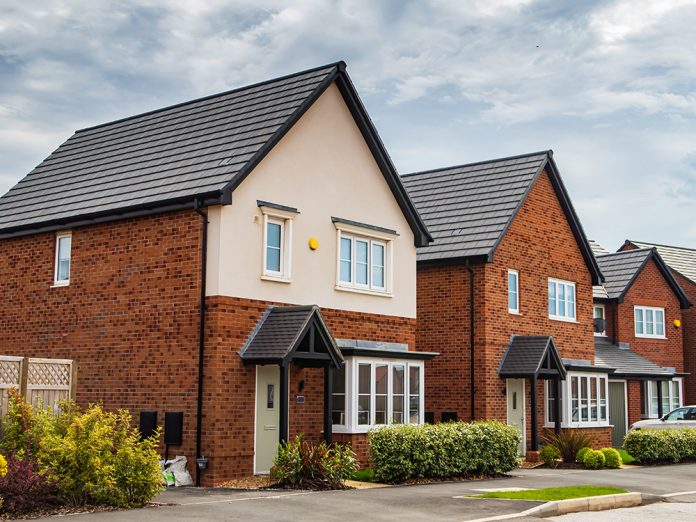Despite the number of new-build developments continuing to rise, sales have decreased – with the current property market volatility are new-builds an effective solution in combating the housing shortage faced by the UK, or are they too expensive for house buyers?
Finbri, a property development finance company, explains, “The housing shortage has arisen because of sustained population growth (estimated to increase 3.2% in the next decade), and a lack of homes, plus the government continuing to under-supply their ambition of 300,000 dwellings a year. The affordability crisis and the ongoing mortgage crisis has also had a robust impact in the last two months after the fallout of the mini-budget. As a result of this many are finding themselves priced out of the property market and having to enter the volatile rental market. New builds continue to be developed, but are they too expensive for house buyers in this current climate?”
Can new-builds fill the housing deficit faced by the UK?
This year so far has seen a 16% increase in new-build completions in comparison to the same period last year, finally reaching pre-pandemic levels. Considering the modern luxury found with new-builds, the ‘net zero’ target by 2050 and tightening restrictions on EPC requirements – it’s not surprising that these developments are desirable to some new buyers.
Property chain-free – Property chains are known for delays and issues that would ultimately cost all parties involved. In the midst of uncertainty, property chain collapses are predicted to increase further – by purchasing a new-build property buyers can avoid this potential issue. This has encouraged buyers to opt for new-build properties over existing ones.
Reduced household bills – New-build properties are built to reach maximum energy efficiency, which means they are typically cheaper to run. Compared to existing properties that most likely have a lower, and therefore worse, EPC rating, resulting in higher household bills – a key issue exacerbated by the impact of the cost-of-living crisis.
Government schemes – To present more affordable housing to combat the housing deficit, various incentives were introduced to encourage new-build purchases – such as the Help to Buy scheme. This has increased accessibility for those looking to enter the property market.
Most new-builds are sold at 37.3% more – Compared to existing properties on the market which is great news for developers, but only if the property sells. The added luxury that comes with a new-build property comes at a price and with mortgage rates rising, new-builds are likely to be out of the grasp of average house buyers currently.
Are new-builds the answer to the housing crisis?
There are around 44,000 vacant houses in England, and with a low number of new-build sales, the housing crisis issue seems to be continuing despite the growing number of new property completions. Many locations have a high number of vacant properties in comparison to new-build sales; this includes:
- Birmingham – has 496 vacant properties in comparison to 337 new-build house sales.
- Liverpool – has 4,880 vacant properties in comparison to 114 new-build house sales.
- Sheffield – has 2,838 vacant properties in comparison to 44 new-build house sales.
- Leeds – has 2,693 vacant properties in comparison to 274 new-build house sales.
National Statistics Data show that cities in the Midlands appear to be struggling the most with new-build house sales in the current environment. Nottingham has only recorded two new builds sold so far in 2022, and Leicester has only recorded six.
Unaffordability with existing properties – with the average house price in the UK now at £296,000 and the average salary around £38,131, many are being priced out of purchasing a property. As a result of this, first-time buyers and those looking to get on the property ladder are finding it increasingly difficult – with less than 30% of millennials owning property.
What are the alternatives?
The government has promised to build more homes, but this isn’t the only solution to the housing crisis. There are several other options that need to be considered to solve the housing crisis; this includes:
Refurbishing existing properties – owners of vacant properties can invest in refurbishment to get their property ready for market. Focusing on energy efficiency during refurbs can be profitable for owners with buyers paying an average of 15.5% more for a home that complies with high energy efficiency standards.
Making use of brownfield sites – these sites have been previously developed but are now vacant. There are a number of these sites located across the UK, and they offer the perfect opportunity for property developers to build much-needed homes.
Converting commercial units into homes – with the number of high street shops declining following the cost-of-living crisis, there are many commercial units that are now vacant. These units can be converted into homes, providing much-needed accommodation for those looking to purchase or rent.
Final thoughts
Despite the increase in new-build completions in the first half of 2022, there continues to be a growing housing shortage in the UK. The growing volatility of the property market has resulted in many new buyers and existing property owners experiencing affordability issues. inflation and coupled with a lack of mortgage deals available many are unable to afford these premiums.
But there is an opportunity for owners of vacant properties to refurbish, and improve energy-efficiency ratings to get their property ready for sale whilst helping get someone onto the property ladder.



 Bitcoin
Bitcoin  Ethereum
Ethereum  Tether
Tether  XRP
XRP  Solana
Solana  USDC
USDC  TRON
TRON  Lido Staked Ether
Lido Staked Ether  Cardano
Cardano  Avalanche
Avalanche  Toncoin
Toncoin